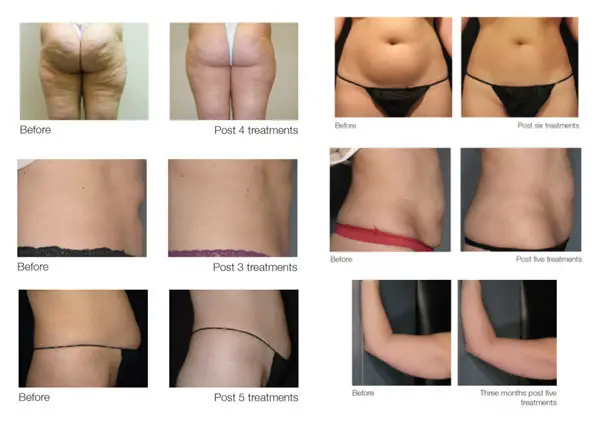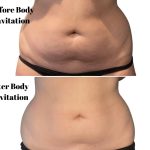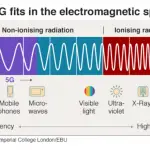If you’re looking to improve your body contour with a non-invasive treatment that requires no downtime, cavitation might be the right choice for you. Cavitation is a popular aesthetic procedure that uses low-frequency sound waves to break down fat cells, giving you a slimmer, more toned look. But, how often can you do cavitation? In this article, we’ll explore the answer to this question and provide helpful tips so that you can get the most out of your cavitation sessions.
Cavitation is a non-surgical cosmetic procedure that can be done as often as every 8 weeks, depending on the area being treated. It is important to give your body enough time to heal between sessions to ensure optimal results. During the procedure, ultrasound energy is used to break down fat cells and cellulite, leaving you with a smoother and tighter appearance.

Contents
What is Cavitation?
Cavitation is a process of breaking down fat cells by exposing them to low-frequency sound waves. It is a non-invasive, safe and painless technique used to reduce fat deposits on the body. Cavitation is often used in body contouring and the reduction of stubborn pockets of fat that are resistant to diet and exercise.
Cavitation works by using sound waves to create tiny bubbles in the fat cells that cause them to break down. As the cells break down, the fat is released into the bloodstream and eventually expelled from the body through natural processes.
Cavitation is a safe and effective way to reduce fat without the need for surgery. It is an excellent choice for those who are looking for a non-invasive method to reduce fat but may not be suitable for those who have large areas of fat that need to be treated.
What to Expect From Cavitation Treatments?
Cavitation treatments are typically done in a series of several treatments, with each session lasting between 30 to 90 minutes. During the treatment, the patient will be exposed to low-frequency sound waves that will cause the fat cells to break down.
The patient may experience some slight discomfort during the treatment, but this should fade as the treatment progresses. After the treatment, the patient may experience some redness or swelling in the area that was treated. This should subside within a few hours.
It is important to note that the results of cavitation treatments may not be seen immediately. It may take several weeks or months for the full effects of the treatment to be seen.
How Often Can You Do Cavitation?
The frequency of cavitation treatments will vary depending on the patient’s individual needs. Generally, treatments are recommended to occur once or twice a week for several weeks in order to see the desired results.
It is important to note that cavitation treatments should not be done more than once a week, as this can cause injury to the fat cells and can lead to long-term damage.
It is also important to follow the instructions of the doctor or technician who is performing the treatment. They will be able to recommend the best schedule and frequency of treatments for the patient.
Are There Any Side Effects?
Cavitation is a safe and non-invasive treatment and there are generally no severe side effects. Some patients may experience mild discomfort during the treatment, but this should subside as the treatment progresses.
The most common side effect is skin redness or swelling at the site of the treatment. This should subside within a few hours and should not require any medical attention.
It is important to note that cavitation treatments should not be done more than once a week, as this can cause injury to the fat cells and can lead to long-term damage.
What to Expect From Results?
The results of cavitation treatments may not be seen immediately. It may take several weeks or months for the full effects of the treatment to be seen.
The results of cavitation will vary from person to person, but most patients should expect to see a reduction in the size of fat deposits and an improvement in the contours of the body.
It is important to note that cavitation is not a weight loss method, but rather a way to improve the body’s shape and contours. It is important to maintain a healthy diet and exercise regimen to ensure the best results from cavitation treatments.
Frequently Asked Questions
What is Cavitation?
Cavitation is a process where localized low-pressure areas form in a liquid due to the presence of a gas. When the pressure drops below a certain threshold, tiny bubbles form in the liquid and collapse, releasing energy and causing a shockwave. This process can be used to treat a wide range of medical conditions, including fat reduction, cellulite reduction, skin tightening, scar reduction, and more.
How Often Can You Do Cavitation?
Cavitation can be done as often as you need it, depending on the condition you are trying to treat. Generally, treatments are done once a week until the desired result is achieved. After that, maintenance treatments can be done every few months or as needed. Each treatment typically lasts about 30 minutes.
What are the Benefits of Cavitation?
Cavitation can be used to treat a wide range of medical conditions, including fat reduction, cellulite reduction, skin tightening, scar reduction, and more. It is a minimally invasive procedure that is effective and safe. It can also help improve circulation and boost the production of collagen, leading to smoother and more youthful skin.
How Does Cavitation Work?
Cavitation works by creating tiny bubbles in the liquid that is being treated. The bubbles form in localized low-pressure areas due to the presence of a gas. When the pressure drops below a certain threshold, the bubbles collapse, releasing energy and creating a shockwave. This shockwave helps to break down fat cells and other tissues, which can then be absorbed by the body.
Are There Any Side Effects of Cavitation?
Cavitation is a safe and effective procedure with minimal side effects. The most common side effects are mild discomfort and redness in the treated area. These side effects usually resolve within a few hours and are usually managed with over-the-counter pain medication.
Is Cavitation Painful?
No, cavitation is not painful. Most patients report feeling only a mild tingling sensation during the procedure. The treatment is usually well-tolerated and there is no recovery period. However, if you experience any pain or discomfort, be sure to let your doctor know.
Cavitation 101 | How to get the BEST RESULTS from cavitation
As a professional writer, I can confidently conclude that cavitation is an effective and safe technique when performed by a qualified professional. It is important to follow the recommended guidelines for frequency of cavitation, which is typically three to four times per week. When done correctly, this non-invasive procedure can provide noticeable results in improving the appearance of cellulite and fat. With regular cavitation treatments, you can finally achieve your desired aesthetic goals.




.jpg)



